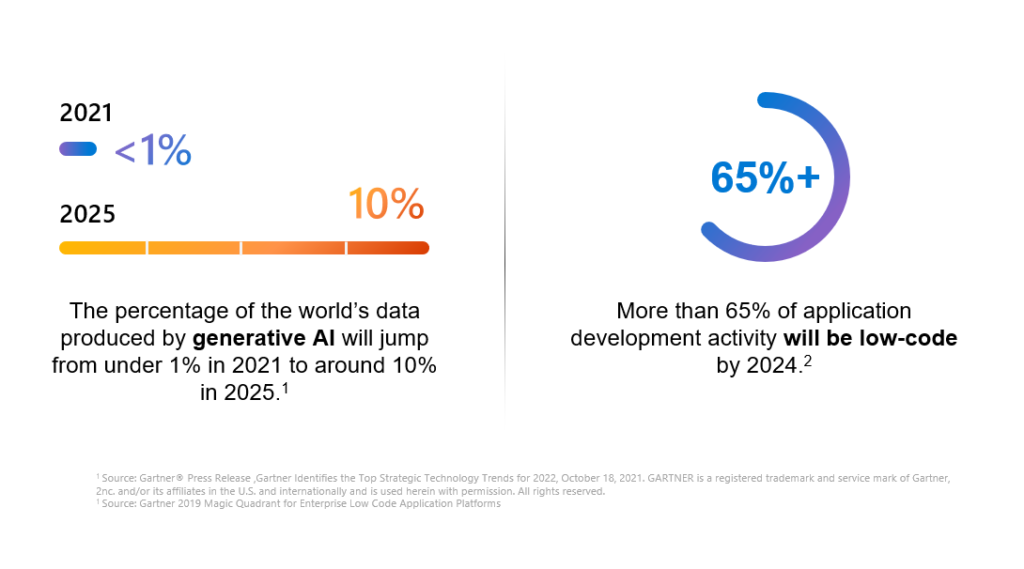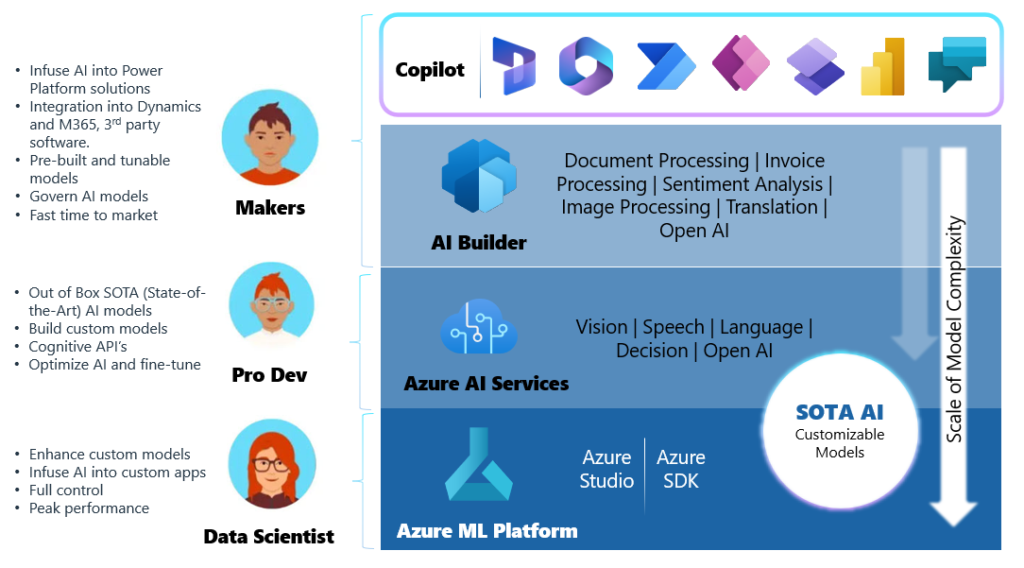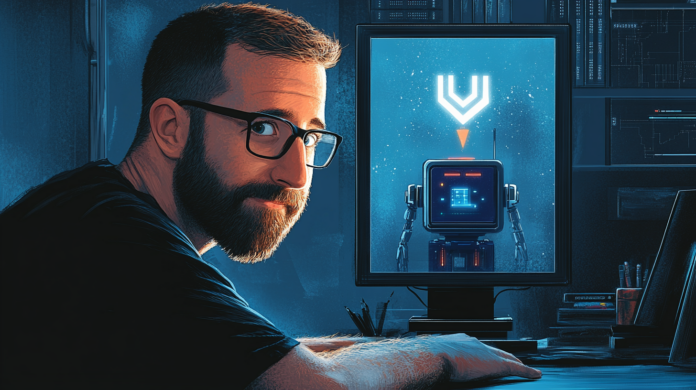In the fast-paced world of technology, we find ourselves amidst an era of rapid innovation and continuous advancements. While the age of digital transformation is still alive, it in itself has been transformed before our very eyes with humans as centric catalyst of the metamorphosis. As we embrace the potential of artificial intelligence, a new paradigm has emerged – the era of enablement. One of the most exciting trends within this era is the marriage of low code development and generative AI. This combination is proving to be a game-changer, offering benefits that surpass those of generative AI alone. Let’s delve into why low code with generative AI is reshaping the landscape of digital transformation and how you can be a part of it.

The Power of Generative AI
Generative AI, which encompasses techniques like GANs (Generative Adversarial Networks) and LLMs (Large language models) like GPT-3, has brought forth unprecedented creativity and efficiency in various domains. It can generate images, text, music, and even entire applications. However, while generative AI is a remarkable tool, it comes with certain limitations. Depending on the use case and functional requirements of consumption and administration complexity, interpretability, and customization can make it harder to operationalize the unquestionable value and impact of AI.

Bridging the AI Skill Gap with Low Code
Take Figure 2 above. Microsoft offers a way to use AI in different levels of complexity. Machine Learning might be too complex for most users and in most cases send even your pro-developers running for the hills. Azure AI provides more advanced options, while Copilot offers an easy out-of-the-box AI tool for creativity and productivity. The majority of an organization will likely fall in the top to middle of these to poles of the spectrum… and I would advocate that they should. This is the sweet spot of the era of enablement. I believe 85% or higher of an organization should be aggregated in this zone.
Enter low code development, a concept that empowers developers and non-developers alike to create applications with minimal hand-coding. It significantly accelerates the development process by providing a visual interface and pre-built components that can be assembled like building blocks. The Power Platform has already proven their worth in simplifying and expediting application creation. Now, imagine combining this approach with generative AI. Not only as an aid to development such as the Copilot component, but more importantly providing a mechanism to quickly and safely use AI within consumed solutions.
Why Low Code with Generative AI Wins
- Speed and Efficiency: Low code platforms allow developers to swiftly create the framework of an application. Combined with AI, you have a platform for to quickly stand up AI solutions in a fraction of the time. This synergy accelerates the entire development lifecycle, from ideation to deployment. Valuable solutions can be deployed with days, instead of months and years.
- Accessibility: Low code empowers individuals with varying levels of technical expertise to contribute to application development. Generative AI enhances this accessibility by autonomously generating complex components that might otherwise require advanced programming ability. Copilot sitting on top of the low-code space is a game changer to almost completely obliterate the skills gap. You don’t need to be a professional developer for low-code and your don’t need to be a data scientist for AI.
- Customization and Integration: While I have addressed model complexity may require some strength of Azure AI or ML in its purest form, low-code offers the ability to customize beyond pre-built models to reach a semi flexible solution that most often hit a sweet spot. Not to mention, it’s more than easy to push and pull data from an almost finite set of resources.
- Innovation and Ideation: The combination of generative AI and low code encourages experimentation and innovation. The heart of AI is to create, and to not have to focus on fine-tuning complex models. However, it’s worth noting that I think most will be seeking middle ground. Low-code offers this balance. Developers and citizen makers can focus on ideation, while AI assists in rapidly producing prototypes and MVPs (Minimum Viable Products).
- Low-code is Dominating: It is estimated that more than 65% of application development activity will be low-code by 2024. AI isn’t going anywhere and is expected to account for 10% of content by 2025 (conservative in my opinion) , so let’s assume it will be in all those applications. AI is now a collateral asset and has sky-rocketed. Low-code is easier, and AI should be as well, so lets just get on with the platform that allows for enablement.
Your Turn to Shape the Future
Whether you’re a seasoned developer or someone with a passion for innovation, this dynamic duo empowers you to create, innovate, and bring your ideas to life like never before. Join the movement and be part of the revolution that’s shaping the future of technology.
Next up lets dig into the tech. Part 3: Copilot and the Power Platform.


